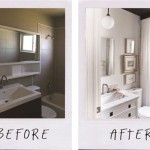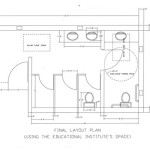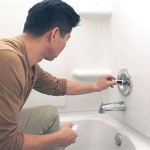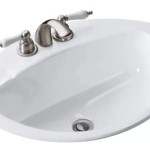How To Install Bathroom Grab Bars For Elderly
Installing grab bars in the bathroom is a crucial safety measure for elderly individuals or those with mobility limitations. Grab bars provide support and stability, reducing the risk of falls, particularly in wet and slippery environments. This article provides a comprehensive guide on how to install bathroom grab bars effectively and safely.
Understanding the Importance of Grab Bar Placement
Before commencing the installation process, it is essential to determine the optimal placement of the grab bars. This depends on the individual's specific needs and the bathroom's layout. Factors to consider include the user's height, reach, and the specific areas where support is needed, such as near the toilet, shower, or bathtub.
For toilet installations, grab bars are typically placed either vertically beside the toilet or horizontally on the wall behind the toilet. The height should be comfortable for the user to reach when sitting or standing. For shower and bathtub installations, grab bars should be positioned to assist with entering and exiting the bathing area. A combination of vertical and horizontal bars may be necessary to provide comprehensive support.
It is advisable to consult with an occupational therapist or healthcare professional to assess the user's specific needs and recommend the most appropriate grab bar placement. Properly positioned grab bars can significantly enhance safety and independence in the bathroom.
Consider also the type of transfer the individual utilizes. Do they need support primarily when transitioning from sitting to standing? Or do they require assistance with maintaining balance while maneuvering in the shower? A thorough understanding of their needs will dictate the best placement and orientation of the grab bars.
Beyond the individual's physical needs, evaluate the structural integrity of the bathroom walls. Identify the wall studs to ensure solid and secure mounting points. Avoid placing grab bars solely on drywall, as it lacks the necessary strength to support a person's weight. If studs are not conveniently located, reinforcement may be required, which will be discussed later in this article.
Selecting Appropriate Grab Bars and Tools
Choosing the right grab bars is crucial for both safety and functionality. Grab bars are available in various materials, sizes, and styles. Stainless steel is a popular choice due to its durability, corrosion resistance, and ease of cleaning. Other options include coated steel, brass, and plastic.
Grab bar length should be adequate to provide sufficient gripping surface. Common lengths range from 12 to 36 inches. Longer grab bars offer more versatility in terms of hand placement. The diameter of the grab bar should also be considered. A diameter of 1.25 to 1.5 inches is generally recommended for comfortable gripping.
In addition to the grab bars themselves, several tools are required for installation. These include a stud finder, drill, drill bits (including a tile drill bit if installing on tiled surfaces), level, measuring tape, pencil, safety glasses, and a screwdriver. Depending on the installation method, additional materials such as wood screws or toggle bolts may be needed.
When selecting grab bars, ensure they comply with relevant safety standards and regulations, such as the Americans with Disabilities Act (ADA). ADA-compliant grab bars are designed to meet specific requirements for size, placement, and weight-bearing capacity.
Beyond functionality, consider the aesthetic appeal of the grab bars. Choose a style and finish that complements the bathroom's decor. Grab bars are available in a variety of colors and designs, allowing for a seamless integration into the existing bathroom environment. This can help to overcome any reluctance to use the aids by making them less obtrusive.
Furthermore, examine the mounting hardware provided with the grab bars. Ensure it is suitable for the type of wall construction in the bathroom. Different types of hardware are required for drywall, tile, and concrete walls. Using the wrong hardware can compromise the grab bar's stability and safety.
Step-by-Step Installation Guide
The installation process involves several key steps. First, locate the wall studs using a stud finder. Mark the stud locations with a pencil. If studs are not available in the desired location, reinforcement will be necessary.
Next, position the grab bar against the wall at the desired location. Use a level to ensure the grab bar is horizontal or vertical, depending on the intended orientation. Mark the screw hole locations on the wall using a pencil.
If installing on tiled surfaces, use a tile drill bit to drill pilot holes through the tile at the marked locations. This will prevent the tile from cracking during the installation process. Exercise caution and apply gentle pressure when drilling through tile.
Once the pilot holes are drilled, insert the screws through the grab bar mounting flanges and into the wall studs. Tighten the screws securely, ensuring the grab bar is firmly attached to the wall. Avoid over-tightening the screws, as this can damage the mounting flanges or the wall studs.
If studs are not available in the desired location, alternative mounting methods may be required. One option is to use toggle bolts. Toggle bolts are inserted through the drywall and expand on the other side, providing a secure anchor. However, toggle bolts are not as strong as screws anchored into wall studs.
Another option is to install a backing board between the wall studs. The backing board provides a solid surface for attaching the grab bars. This method requires opening up the wall and inserting a wooden board between the studs. The board should be securely fastened to the studs using screws or nails. This is a more involved process, but provides a significantly stronger and stable mounting point.
After the grab bars are installed, test their stability by applying moderate pressure to them. Ensure they are firmly attached to the wall and do not move or flex excessively. If the grab bars feel loose or unstable, re-tighten the screws or consider using longer screws or additional reinforcement.
For added safety, consider applying a non-slip coating or tape to the grab bars. This will improve grip and reduce the risk of slipping, especially when the grab bars are wet. Non-slip coatings are available in a variety of colors and textures.
Finally, clean the grab bars thoroughly to remove any dirt or debris. Use a mild detergent and water to clean the grab bars. Avoid using abrasive cleaners, as these can damage the finish. Regular cleaning will help to maintain the grab bars' appearance and prevent the buildup of bacteria.
When drilling into tiled walls, it's crucial to use the correct type of drill bit and speed. A slow, steady pace is essential to prevent cracking. Start with a small pilot hole and gradually increase the size until it matches the screw diameter. Applying painter's tape over the drilling area can also help prevent chipping.
If using toggle bolts, ensure they are properly sized for the thickness of the wall. The wings of the toggle bolt must fully expand behind the wall to provide adequate support. Overtightening toggle bolts can crush the drywall, so apply only enough pressure to secure the grab bar firmly.
For individuals with significant mobility limitations, consider installing multiple grab bars at varying heights and angles. This will provide a customized support system that meets their specific needs. Experiment with different configurations to find the most comfortable and effective arrangement.
Regularly inspect the grab bars for signs of wear and tear, such as loose screws, corrosion, or damage to the mounting flanges. Replace any damaged or worn components immediately to maintain the grab bars' safety and functionality. Prevention is always better than reaction in these situations.

Bathroom Safety Grab Bars Toilet Renovation Singapore

What Type Of Safety Grab Bars For The Toilet Shower Bathroom Should You Seniorcare Singapore S Most Reliable Elderly

How To Install Bathroom Safety Bars True Value

How And Where To Install Bathroom Safety Rails Grab Bars

Standard Bathroom Grab Bar Heights

Choosing The Best Grab Bars For Your Home Forbes Health

Bathroom Grab Bars Purpose And Benefits For Seniors Step2health

Bathroom Grab Bars For Seniors Shower Rails

Things About Grab Bars That You Should Know Fullsun

Toilet Grab Bars For Elderly Manufacturer Mma Steel
Related Posts







